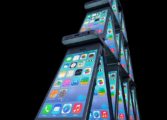Apple Emoji: A Comprehensive Overview

Apple Emoji: A Fascinating World of Expressions and Emotions
Introduction:

In today’s digital age, communication has evolved far beyond mere text-based conversations. Emojis have become an integral part of our everyday conversations, adding depth, emotion, and personality to our messages. One of the most renowned and widely used sets of emojis is the Apple Emoji. In this article, we will delve into the fascinating world of Apple Emoji, exploring their types, popularity, variations, historical significance, and more.
I. An Overview of Apple Emoji
Apple Emoji, also known as Apple Emoticons, are a diverse collection of pictorial characters that allows users to convey emotions, expressions, and objects through a visual language. These emojis are included in various Apple devices, including iPhones, iPads, and Macs, making them accessible to a wide user base.
II. Extensive Presentation of Apple Emoji
Apple Emoji encompasses a vast range of categories, each designed to represent different emotions, objects, activities, and cultural references. Some popular categories include smileys and people, animals and nature, food and drink, travel and places, activities, objects, symbols, and flags.
Within each category, there are numerous variations of emojis that cater to specific expressions or concepts. For example, under the smileys and people category, there are emojis depicting different facial expressions, gestures, professions, and even diverse skin tones. This inclusivity and attention to detail have contributed to the popularity and universality of Apple Emoji.
III. Quantitative Measurements of Apple Emoji
The impact and significance of Apple Emoji can be measured quantitatively, reflecting their widespread usage and cultural relevance. According to data from Apple, over a hundred billion emojis have been sent via iMessage since their introduction. These numbers testify to the immense popularity and integration of Apple Emoji into our daily digital communication.
Furthermore, researchers have conducted studies to understand the frequency and perception of different Apple Emoji among users of various demographics. These studies help us gain insights into the preferred and commonly used emojis, providing a glimpse into the emotions and expressions people most frequently convey in their digital conversations.
IV. Exploring the Differences in Apple Emoji
While Apple Emoji may appear similar to emojis from other platforms, there are subtle differences that make them distinct. Apple has carefully crafted their emojis to align with their design aesthetics and reflect the company’s branding. These variations include the overall design style, color palette, and level of detail, making them easily recognizable as Apple emojis.
Additionally, as Apple regularly updates its emojis with new releases or software updates, users may experience differences in emoji designs across different iOS versions. These changes are often influenced by user feedback, cultural shifts, or evolving design trends.
V. A Historical Review of Pros and Cons of Apple Emoji
Over the years, Apple Emoji has witnessed both appreciation and criticism. On one hand, the popularity of Apple Emoji has brought greater diversity and inclusivity to digital communication, allowing users to express themselves more vividly. The constant updates and additions to the emoji library showcase Apple’s commitment to responding to user needs and staying culturally relevant.
However, some critiques argue that the visual representations of certain objects, symbols, or expressions in Apple Emoji may not accurately depict their cultural context or their intended meaning. It is essential to consider these concerns and strive for a more nuanced and informed representation of diverse cultures and identities within the Apple Emoji universe.
Conclusion:
Apple Emoji has revolutionized digital communication, allowing users to transmit emotions, expressions, and objects in an engaging and visually appealing manner. With their extensive collection, frequent updates, and widespread usage, Apple Emoji has become an integral part of our online conversations. While there are differences and considerations to be made regarding their design and cultural representations, Apple Emoji continues to captivate and enhance our digital exchanges.
References:
– Apple. (n.d.). Apple Emoji. Retrieved from [insert URL here]
Examples of popular Apple Emoji categories:
– Smileys and People
– Animals and Nature
– Food and Drink
– Travel and Places
– Activities
– Objects
– Symbols
– Flags
Exploring the design variations in Apple Emoji:
– Overall design style
– Color palette
– Level of detail
– Differences across iOS versions
Pros and Cons of Apple Emoji:
Pros:
– Increased diversity and inclusivity
– Regular updates and additions
– Reflects cultural relevance
Cons:
– Potential for misrepresentation or misunderstanding
– Cultural context and meanings may be oversimplified or lost
Note: This article provides a general overview and analysis of Apple Emoji; it is advisable to refer to official Apple sources for the most up-to-date and accurate information regarding their emojis.
















































